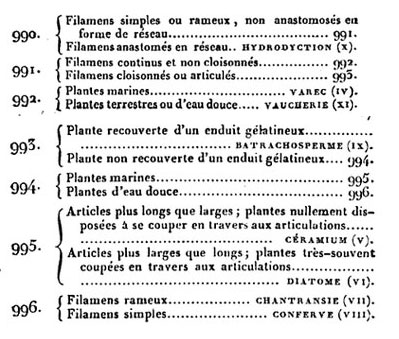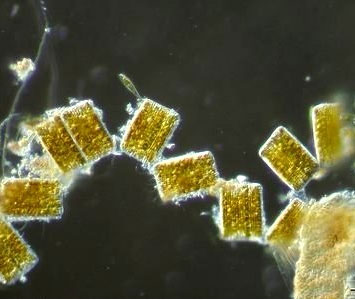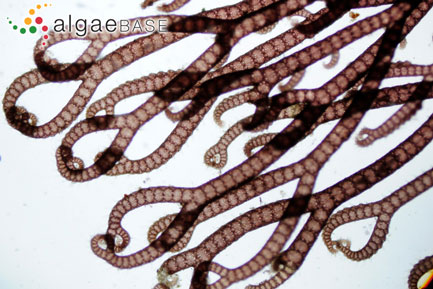
Figure
9
(above). From Lamarck & Candolle, Flore française,
ed. 3,
vol. 1 (1805). Alternate images: Hydrodictyon (Russ Kleinman,
http://www.wnmu.edu/academic/nspages/gilaflora/hydrodictyon
_sp.html), Vaucheria (Y. Tsukii,http://protist.i.hosei.ac.jp/pdb/
Images/Heterokontophyta/Vaucheria/sp_3.html), Batrachospermum
(T. Tsukii, http://protist.i.hosei.ac.jp/pdb/
Images/Others/Rhodophyta/Batrachospermum/sp_06.html).
|
Passing down the key to the algae (Figure 9) one
leaves behind filaments anatamosed as a net (Hydrodictyon,
990), filaments continuous and not partitioned (Vaucheria,
991), covered with a gelatinous coating (Batrachospermum,
993), and living in fresh water (994), until a final pair
(995) of marine plants is reached: Diatoma and Ceramium
(Figures 10 & 11).
Diatoma
had segments (articles) longer than wide, the plants very often
cut crosswise by articulations;
Ceramium's segments were wider than long and not
at all disposed to being cut transversely.
The congruence of the descriptions
in the key of the filaments as cut crosswise, the generic description
covering both species emphasizing segments which separate from
one another except at their corners, and the explicit reference
to the Roth figure in which the form is manifestly that of an
incised filament reinforces the conclusion that this cleavage
of the filament was the focus of the generic diagnosis and the
name. Had his specimens been freshwater, one can easily imagine
Candolle as having viewed them as cloven confervas.
|



